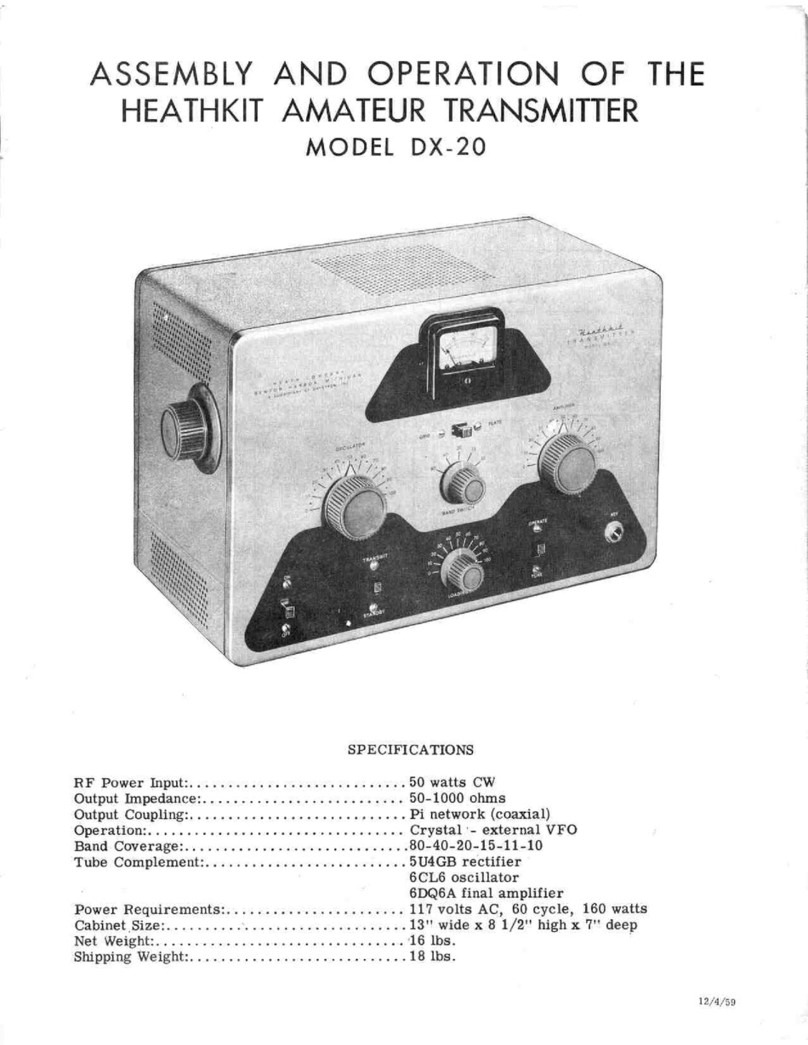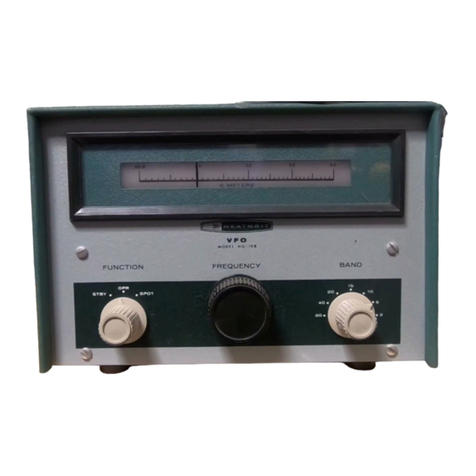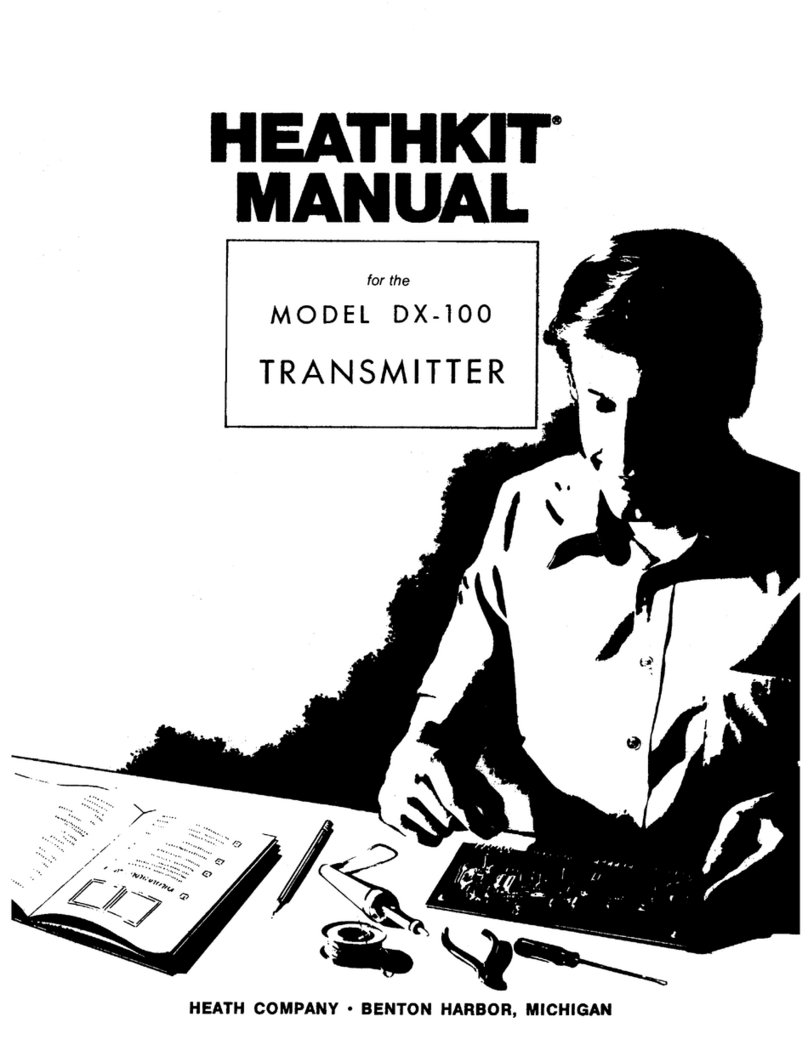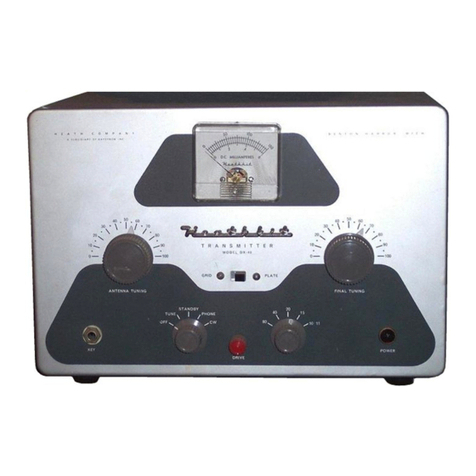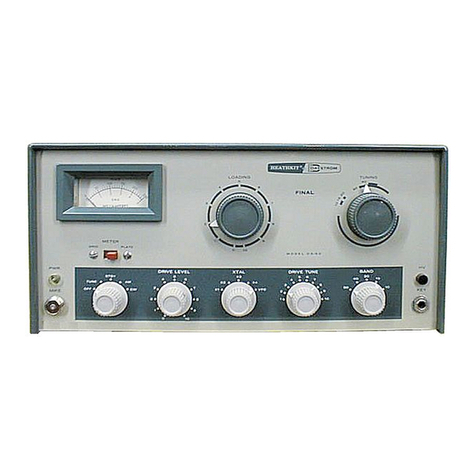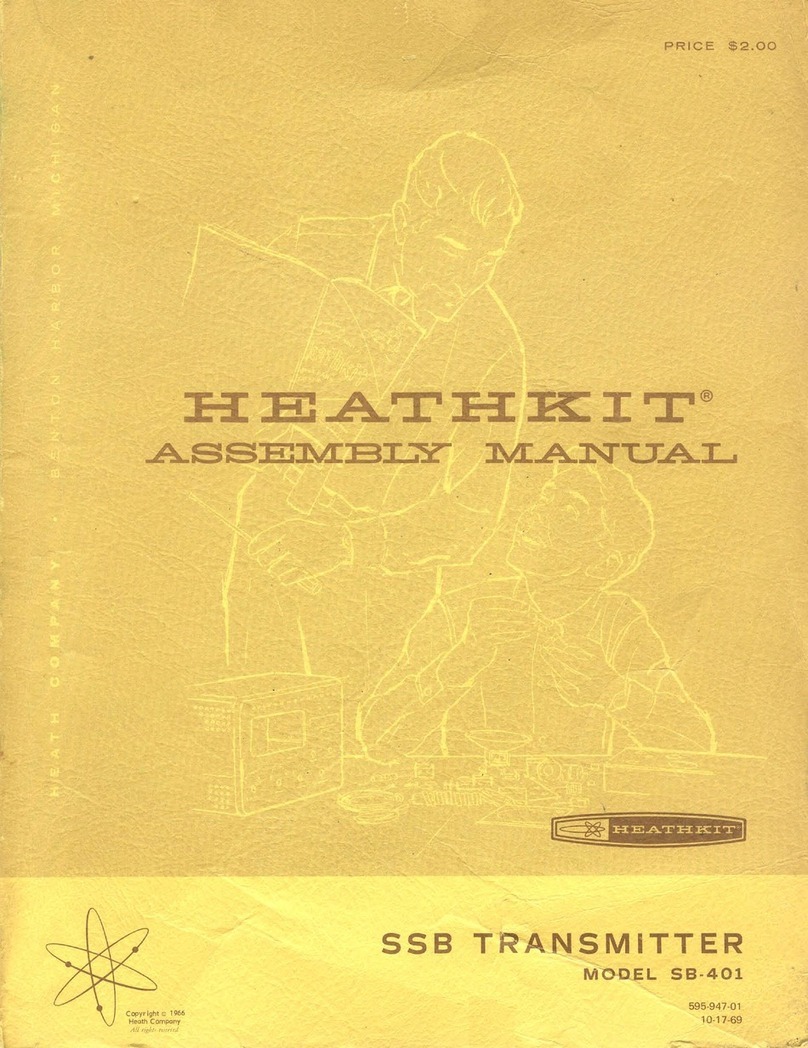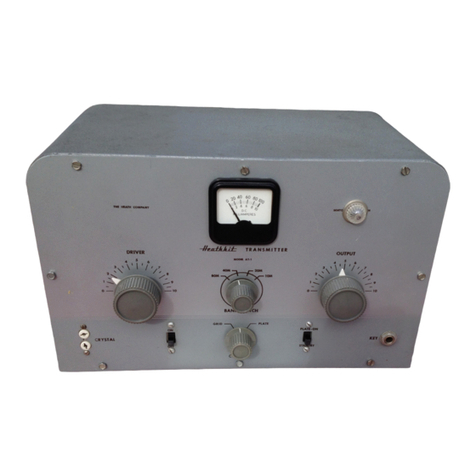
BUFFER: The 12BY7 buffer stage has an independent filament supply to prevent heater-to-
cathode breakdown as this cathode is 300 volts above the other tubes. The plate of the buffer
is shunt-fed directly from the 600 volt supply through a1.1 mh RF choke. The plate circuit for
the buffer stage actually appears in the grid circuit of the 6146 amplifier. The buffer plate is
capacity coupled to the amplifier grid coils and is tuned along with the amplifier grid.
FINAL AMPLIFIER: By placing the tuned circuit in the grid of the final amplifier, the normal
grid RFchokeis eliminated. This lessens the possibility of low frequency parasitics due to the
grid choke and also the chance of coupling from the final grid choke to the shunt-feed choke of
the buffer stage. An air trimmer capacitor across the grid coils adjusts the grid drive by tun-
ing the grid for maximum efficiency across the band.
The plate circuit is shunt-fed through a2.5mh RF.choke andcapacity coupled into the pi network
tank circuit. For operation at 80 and 40 meters, a68 ^l|x^ 1000 volt fixed capacitor is automat-
ically paralleled with the plate tuning capacitor by means of the bandswitch. A900 uiif variable’
capacitor is permanently connected across the output of the pi circuit for antenna loading.
s
MODULATOR: A12AX7 tube is used as atwo-stage resistance coupled speech amplifier. The
output of the speech amplifier is split into two channels, one of which feeds one-half of a12AU7
acting as acontrol tube. The control tube averages the audio level in its cathode circuit as a
DC bias which is applied to the other half of the 12AU7 acting as acathode follower. The other
half of the speech amplifier output is applied to the grid of the cathode follower and appears as
asuperimposed audio signal on the DC output of the cathode follower. The combined output of
the cathode follower is applied to the screen of the 6146 RF amplifier and results in avarying
DC screen voltage with an audio component. The net result is achange in both RF output and
modulation as the audio level changes.
POWER SUPPLY; The power supply consists of atransformer-operated full wave rectifier cir-
cuit with achoke input filter. Two filter capacitors are operated in series to withstand the
voltage involved. Two Identical resistors across the filter capacitors serve adual purpose of
equalizing the filtervoltage andacting as ableeder resistor to stabilize the output under varyii^
load conditions. A5U4GB tube is used as the full wave rectifier. This tube is aheavy-duty
version of the regular 5U4G. Some of the tube ratings have been exceeded while others are
operated under the maximum permissible. Tests have indicated that by using the heavy duty
tube with choke input and alight current load, no difficulty should be encountered.
NOTES ON ASSEMBLY AND WIRING
Many of these kits will probably be constructed by people just starting in the amateur radio field.
Consequently, the step-by-step instructions in tWs manual have been covered in considerable
detail. Read each step completely through and be Sure it is understood before proceeding with
the operation called for. This will assure that acomplicated step is performed in the proper
sequence in order to complete it with the least possible difficulty.
There is considerable similarity between the screws and nuts of the 3-48 and the 4-40 hardware
supplied. Before using these pieces, examine them closely to determine that you have the part
called for in the instructions. This is particularly true of the small size 4-40 nuts which re-
semble 3-48 nuts in physical size. These nuts may even hold on a3-48 screw, but will, feel
loose. If any doubt exists, try the nut on a4-40 screw to check it. There are only three of these
and they should be used in mounting the crystal sockets.
In the design of the Heathkit DX-35, no effort was spared to obtain the highest quality components
and assemble them in the best possible arrangement. By the same token, the kit builder should
exercise agreat deal of care during assembly and wiring. Only by putting the best possible
workmanship into the kit, can best results be obtained from it. There is also a great deal of
personal satisfaction in aneat, professional-lookingtransmitter, resulting from careful assem-
bly and wiring. Acommon factor of radio frequency instruments is the critical placement of
leads and components. The use of extensive shielding in the DX-35 has eliminated agreat deal
of this. However, the lead dress shown in the pictorials and bottom chassis photograph should
be followed carefully.
Page 4
